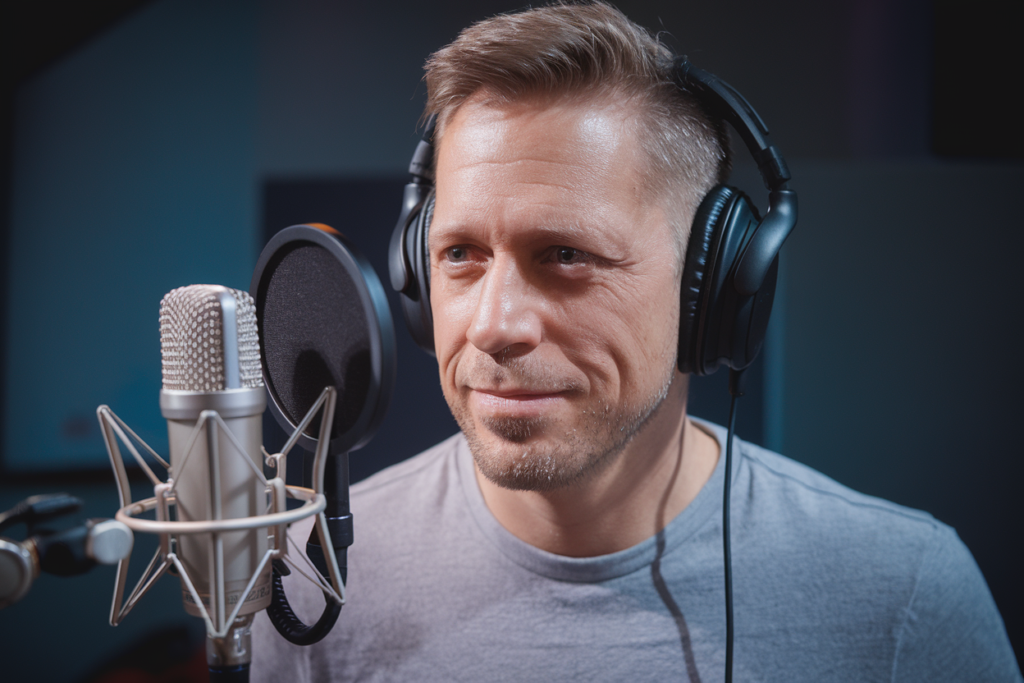Key Takeaways
- Cultural Nuances Matter: Understanding cultural differences is crucial for effective media localization, as humor and values can vary significantly between cultures.
- Beyond Translation: Localization involves adapting context, tone, and style—not just translating words—to resonate with the target audience.
- Importance of Skilled Voice Talent: Employing voice actors familiar with regional dialects enhances authenticity and emotional connection in localized content.
- Technical Precision is Key: Ensuring audio-video synchronization and accurate subtitles is vital to maintain clarity and engagement for viewers across different languages.
- Technology Enhances Localization Efforts: Utilizing localization tools can streamline the process but should complement human translation for nuanced understanding.
- Learn from Case Studies: Analyzing successful and failed localizations provides valuable insights into best practices and common pitfalls in German media.
Have you ever wondered why some German media just doesn’t hit the mark? As global audiences expand, German media localization issues have become a hot topic. Misunderstandings in cultural nuances and language can leave viewers feeling disconnected from content that should resonate with them.
Navigating these challenges isn’t just about translation; it’s about truly connecting with your audience. Whether you’re a filmmaker, marketer, or content creator, understanding the intricacies of localizing for the German market can make all the difference. Let’s dive into these issues and discover how to bridge those gaps effectively.
Overview of German Media Localization Issues
German media faces significant challenges in localization, impacting its ability to engage global audiences. Misunderstandings in cultural nuances often lead to a disconnect between content and viewers. For instance, humor that resonates with a German audience might not translate well to other cultures, resulting in confusion or even offense.
Localization extends beyond mere translation; it involves adapting context, tone, and style to fit the target culture. This process is especially crucial for voiceover work. Selecting the right voice talent can make or break a project’s success. A voiceover artist who understands regional dialects and cultural references enhances authenticity, making the content relatable.
Moreover, using appropriate voice actors ensures that emotions align with the narrative intent. When your media features characters speaking naturally in their native tones, it fosters connection and engagement with viewers. Therefore, prioritizing skilled voice over talent during localization efforts becomes essential.
Consider also technical aspects such as timing and pacing when localizing audio components. The rhythm of speech varies across languages; thus adjusting these elements ensures that your messaging remains impactful while retaining clarity.
Tackling these issues effectively requires awareness of both linguistic intricacies and cultural sensitivities within the German market. By focusing on comprehensive localization strategies—especially regarding voiceovers—you can bridge gaps between your content and diverse audiences worldwide.
Challenges in Language Translation
Translating media for a German audience presents unique challenges that go beyond simple word-for-word translation. Understanding the intricacies of language and culture is essential for creating content that resonates.
Cultural Nuances and Context
Cultural nuances play a significant role in how audiences perceive media. What works in one culture might not translate well into another. For instance, humor often relies on cultural references that may not be familiar to foreign viewers. When localizing content, consider the values, traditions, and social norms of your target audience. Using voice talent who understands these elements can enhance relatability and engagement. They can adapt their delivery to fit different cultural contexts, ensuring that the message connects effectively.
Idiomatic Expressions
Idiomatic expressions pose another layer of complexity in translation. Phrases common in German might confuse non-native speakers or lose their meaning entirely when translated literally. Effective localization requires identifying these expressions and finding equivalents that convey the same sentiment without losing impact. Employing skilled voice artists who are adept at handling idioms helps maintain authenticity while ensuring clarity for diverse audiences. A proficient voice actor can seamlessly integrate localized phrases into their performance, enhancing comprehension and emotional connection with listeners.
By addressing these challenges thoughtfully, you create more engaging content that speaks directly to your audience’s experiences and expectations.
Technical Aspects of Localization
Localization in media isn’t just about translating words; it’s a complex process that involves technical precision to ensure messages resonate with diverse audiences. Understanding these technical aspects can significantly enhance the effectiveness of your content.
Audio and Video Synchronization
Audio and video synchronization plays a crucial role in localization. When adapting content for a German audience, timing must align perfectly between voiceovers and visuals. Mismatched audio can distract viewers and disrupt comprehension. Voice talent should possess the skill to deliver lines that sync seamlessly with on-screen action, ensuring natural flow. Timing adjustments might be necessary to accommodate language differences, as some phrases take longer or shorter to express in different languages. This attention to detail enhances viewer engagement and maintains the integrity of your original message.
Subtitle Accuracy
Subtitle accuracy is another critical factor in localization. Subtitles must convey not only the spoken words but also cultural nuances and context. Translating idiomatic expressions literally often leads to confusion or loss of meaning for non-native speakers. A skilled voiceover artist understands this challenge and can provide nuanced translations that resonate with local audiences while keeping subtitles concise enough for easy reading during playback. Ensuring subtitles accurately reflect tone, humor, and intent helps bridge cultural gaps, allowing your content to connect authentically with viewers.
By focusing on these technical aspects, you enhance the overall quality of localized media projects—creating engaging content that speaks directly to diverse audiences while respecting their unique cultural contexts.
The Role of Technology in Localization
Technology plays a vital role in the localization process, enhancing efficiency and effectiveness. It streamlines various aspects of adapting media for different audiences, ensuring that content aligns with cultural expectations.
Machine Translation vs Human Translation
Machine translation offers speed and convenience but lacks the nuance required for effective communication. While it can handle straightforward text, subtle idiomatic expressions or cultural references often fall flat. In contrast, human translation brings an understanding of context, tone, and regional variations. A skilled voice artist can adapt scripts to reflect local dialects and sensibilities, making the content more relatable to your target audience. This level of personalization creates a stronger connection with viewers.
Localization Tools and Software
Numerous tools exist to facilitate localization efforts. These include software for audio synchronization, subtitle creation, and quality assurance checks. Such tools help ensure that voiceovers align perfectly with visuals while maintaining clarity in subtitles. For instance, using specialized software allows you to adjust timing effortlessly so that voice talent delivers lines at just the right moment on screen. Additionally, collaboration platforms enable teams across different locations to work together seamlessly—an essential factor when managing diverse projects needing multiple languages or accents.
By leveraging technology effectively alongside experienced voice artists who understand local cultures and languages, you can create engaging content that resonates deeply with your audience while respecting their unique contexts.
Case Studies on German Media Localization
German media localization presents both successes and challenges. Examining these case studies reveals valuable insights into effective strategies and common pitfalls.
Successful Localizations
Successful localizations often hinge on understanding cultural nuances. For example, a popular German animated series managed to captivate international audiences by carefully adapting humor and character expressions. The team employed skilled voice artists who not only translated the script but also infused it with local context, making jokes resonate well beyond Germany’s borders. This alignment between voice talent and regional culture significantly enhanced viewer engagement, proving that deep cultural immersion can lead to wider acceptance of content.
Another instance includes a documentary that originally catered to a German audience. By collaborating with knowledgeable voice actors for English adaptations, the filmmakers maintained the original tone while ensuring clarity in messaging. The choice of voiceover talent who grasped regional dialects helped preserve authenticity, allowing viewers from different backgrounds to connect with the subject matter meaningfully.
Notable Failures
Not all localized media achieves its intended impact. A notable failure involved a comedy film where direct translations overlooked cultural sensitivities. The humor fell flat for international viewers due to lack of context in punchlines and references unfamiliar outside Germany. Poorly chosen voiceover talent exacerbated this issue; their delivery failed to capture the essence of the original intent, leaving audiences confused rather than entertained.
Another example lies in an acclaimed drama series that attempted quick localization without adequate testing among target demographics. The subtitles contained inaccuracies, leading to misunderstandings about key plot points. Voice actors struggled with timing as they tried to match poorly synchronized audio clips. Such oversight can alienate potential fans when stories don’t translate effectively across cultures.
Conclusion
Navigating German media localization requires a nuanced understanding of cultural intricacies and linguistic subtleties. By prioritizing effective adaptation over mere translation you can create content that resonates authentically with diverse audiences.
Emphasizing the right voice talent along with the technical aspects of localization ensures your messaging remains impactful. Remember that every detail matters from idiomatic expressions to humor which must be carefully tailored for each audience.
Ultimately investing in skilled professionals and leveraging advanced localization tools will elevate your content’s reach and effectiveness, making it more relatable across cultures. This dedication not only enhances viewer experience but also solidifies your brand’s presence in global markets.
Frequently Asked Questions
What are the main challenges German media faces in localization?
German media struggles with cultural nuances and language translation that can create misunderstandings. Humor and references that resonate with a German audience may not translate well, leading to confusion or offense among international viewers.
Why is effective localization important for filmmakers and marketers?
Effective localization helps filmmakers and marketers connect better with their target audiences. It goes beyond simple translation; adapting context, tone, and style ensures that content resonates authentically across different cultures.
How does voiceover work impact media localization?
Voiceover work plays a crucial role in localization by adding authenticity. Selecting voice talent familiar with regional dialects and cultural references helps ensure that the delivery aligns with local expectations, enhancing audience engagement.
What technical aspects should be considered in localization?
Key technical aspects include audio-video synchronization and subtitle accuracy. Proper timing between voiceovers and visuals is essential to maintain viewer focus, while subtitles must convey spoken words along with relevant cultural nuances.
How do idiomatic expressions affect translations?
Idiomatic expressions can confuse non-native speakers if translated literally. It’s essential to identify these phrases and find suitable equivalents that maintain their intended impact, ensuring clarity for diverse audiences.
What role does technology play in the localization process?
Technology enhances efficiency in the localization process through tools for audio synchronization, subtitle creation, and quality assurance. While machine translation offers speed, human translators provide deeper understanding of context and regional variations.
Can you give an example of successful German media localization?
A popular German animated series effectively localized its humor by carefully adapting character expressions for international audiences. This thoughtful approach helped it captivate viewers beyond Germany by respecting cultural differences.
What are some pitfalls of poor media localization?
Notable failures often arise from overlooking cultural sensitivities or relying on direct translations. Such oversights can result in confusion or offense, emphasizing the need for skilled voice talent who understand local contexts during adaptation efforts.







